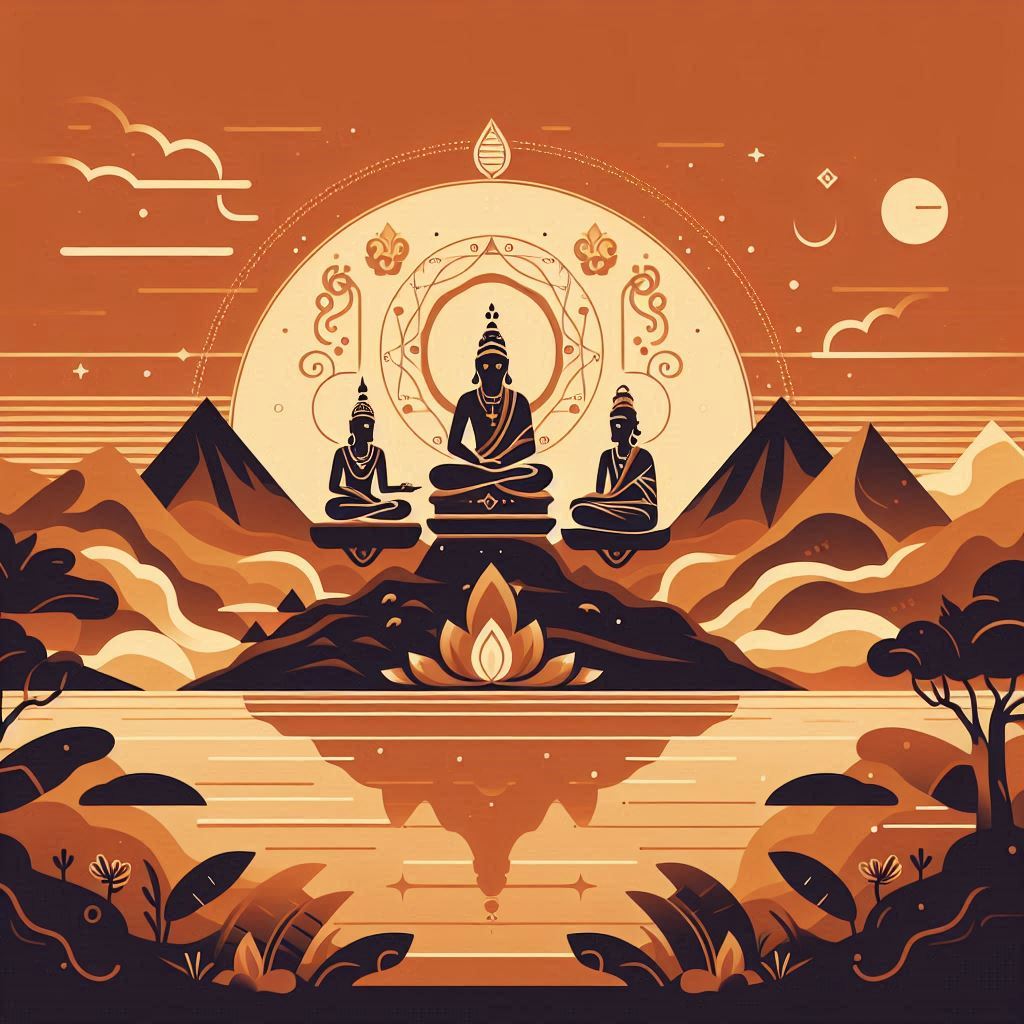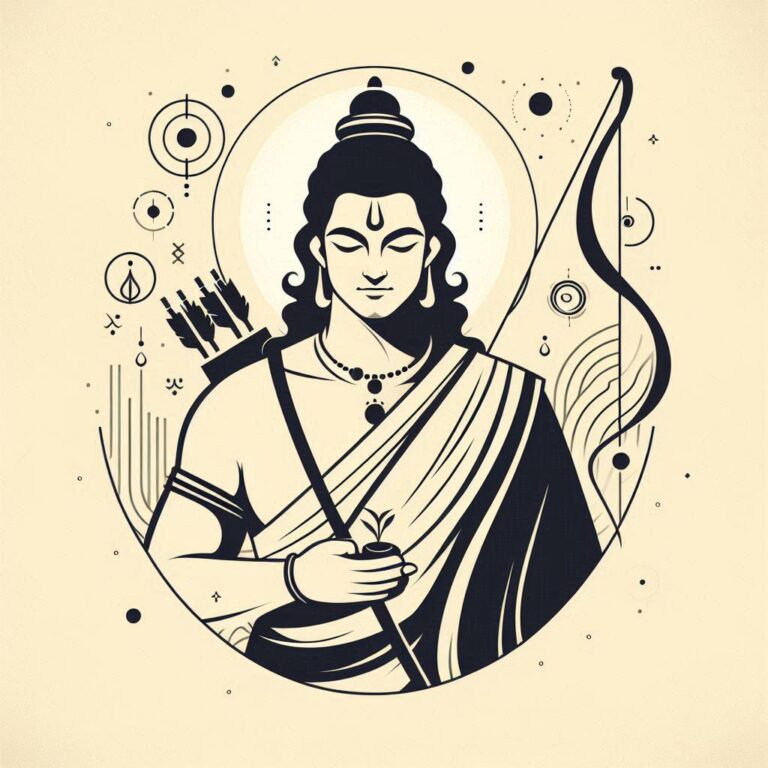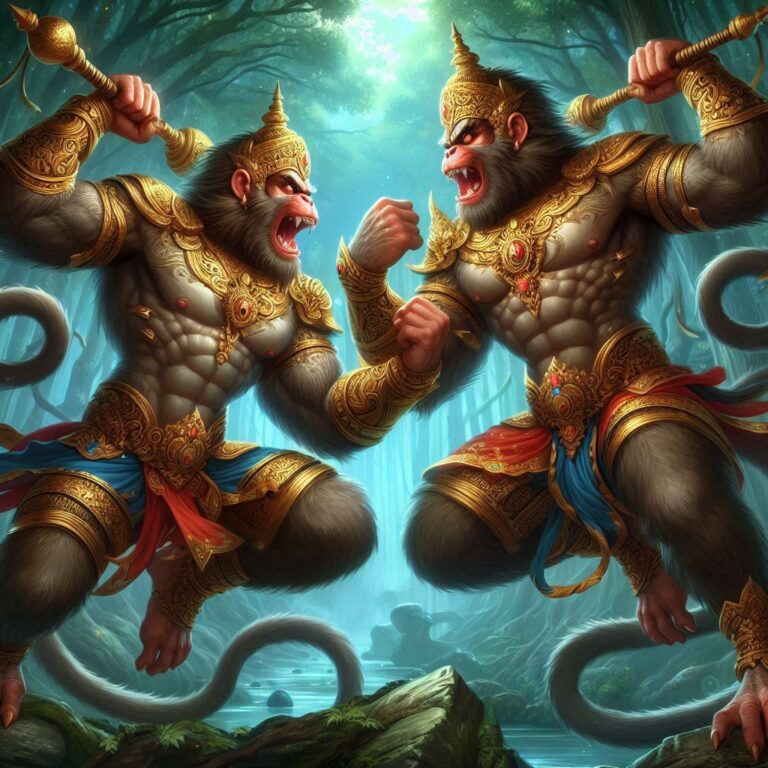Exploring Dharma and Duty Philosophy in the Ramayana
The Essence of Dharma and Duty in the Ramayana
When diving into the ocean of ancient texts, few tales resonate with profound wisdom as deeply as the Ramayana. This epic, attributed to Valmiki, doesn’t just narrate the adventures of Lord Rama; it intricately weaves the code of dharma (duty/righteousness) into its very fabric. So, grab a comfy seat as we explore the philosophy of dharma and duty in this timeless epic, and why it remains crucial for navigating the complexities of our lives today.
Understanding Dharma: The Guiding Principle
Before we dig into the specifics of dharma in the Ramayana, it’s essential to define what dharma is. This Sanskrit term can be loosely translated as “duty,” “righteousness,” or “law.” But dharma is more than just a set of rules; it’s the moral compass that guides individuals to act in service of the larger society while aligning with their inner values.
Why is Dharma Important?
Imagine sailing on a vast sea without a compass—might be fun at first, but soon you’ll find yourself lost. That’s how life feels without dharma. It anchors us, provides a sense of direction, and helps us balance personal desires with social responsibilities.
Here’s an engaging way to think about it: dharma is like a thread that connects our individual lives to the larger tapestry of society. When one strand goes haywire, the whole fabric might unravel!
Duty as Portrayed in the Ramayana
The Ramayana is a showcase of dharma in action, illustrating how characters embody their duties against the backdrop of their relationships and life choices. Let’s look at some key figures:
Lord Rama: The Ideal Man
Rama, often referred to as Maryada Purushottama (the ideal man), sets the gold standard for dharma. His unwavering commitment to his duties as a son, husband, and king encapsulates the essence of responsibility.
-
As a Son: When Lord Rama was exiled to the forest, he didn’t argue with King Dasharatha’s decision. Instead, he upheld his father’s word, demonstrating an unparalleled sense of filial duty.
-
As a Husband: His relationship with Sita was based on mutual respect and responsibility. Even when Sita was abducted, Rama felt it was his dharma to rescue her, showcasing the lengths he would go to honor his commitments.
-
As a King: When returning to Ayodhya, Rama faced the dilemma of public opinion regarding Sita’s purity. He made the heart-wrenching decision to ask her to leave to uphold his duty as a king, illustrating that sometimes dharma can be a heavy burden.
Throughout the Ramayana, Lord Rama epitomizes the ideal of selfless duty, always putting the well-being of others before his own desires.
Sita: The Epitome of Strength and Sacrifice
Now, let’s not forget Sita, who stood as a pillar of strength and responsibility. Her life reflects unwavering commitment and sacrifice.
-
Staying True to Her Love: Sita’s devotion to Rama was unyielding. Even in captivity, she never wavered in her love, showcasing the depth of her devotion as a wife.
-
Facing Trials: Think of Sita as a lighthouse—no matter the storm, she remained steadfast, demonstrating strength through trials. Her exile and trials in the forest reflect her inner resilience and unwavering commitment to her dharma as a wife and daughter-in-law.
Hanuman: The Devoted Servant
Then there’s Hanuman, the epitome of devotion and service. His relentless pursuit to aid Rama symbolizes the duty of selfless service.
-
An Unmatched Ally: When Sita was captured, Hanuman didn’t think twice before leaping across the ocean to find her. His actions embodied the idea of serving others without expectation, making him the perfect devotee.
-
Strength in Humility: Despite his immense strength and powers, Hanuman’s humility shines through. This is a reminder that true strength lies in recognizing one’s role and fulfilling it without seeking glory.
The Philosophical Lessons from Ramayana’s Characters
So, what can we gather from these incredible characters? The Ramayana teaches us that the essence of dharma and duty is multifaceted. Here’s a brief overview of the philosophical takeaways we glean:
-
Balance: Just like a tightrope walker, finding equilibrium between personal desires and societal responsibilities is crucial.
-
Sacrifice: Sometimes, fulfilling your duty means making tough choices that may not please everyone. Think of it as being the captain of a ship; you must steer the vessel through stormy waters for the safety of the crew.
-
Resilience: Life is bound to throw curveballs, just as it did with Sita. Staying true to your path, no matter the challenges, is what defines true character.
- Service:** Selfless service, like Hanuman’s loyalty to Rama, reminds us that helping others enriches our own lives.
How These Philosophies Resonate Today
You might wonder, “How does this apply to my life?” Well, in a world filled with chaos and moral dilemmas, the principles of dharma guide us through the fog. Consider the following aspects:
Navigating Through Modern Conflicts
In today’s fast-paced life, familial obligations, professional duties, and societal norms often collide. Learning about Rama’s choices can help you navigate your relationships with grace. What’s your dharma in tricky situations? Obligations to family? Your partner? The answer isn’t always black and white.
Aligning Personal and Professional Responsibilities
In your professional life, it’s crucial to balance ambition and ethical responsibility. Think of Rama’s commitment to his citizens; it’s a reminder to consider the bigger picture when making career decisions.
Finding Inner Peace
Understanding your dharma can lead to a more fulfilling life. Just like the characters in the Ramayana, embracing your duty can foster a sense of fulfillment and inner peace.
Dohas and Shlokas Associated with Dharma
In the spirit of delving deeper, let’s explore some relevant dohas and shlokas that capture the essence of dharma and duty:
Doha 1
सुखदुख समे कर्ता, सदा राम भजन।
दीन-दुखी के साथ रहत, श्रीराम के वचन।
Phonetics: Sukha-dukh same karta, sada Ram bhajan.
Deen-dukhī ke saath raha, Shri Ram ke vachan.
Translation: One who treats joy and sorrow alike and always sings the praises of Rama, remains with the downtrodden—true to Rama’s words.
Doha 2
बात ना कोई करे, आचार धर्म ना निभाए।
दुनिया प्रचार करे, धीरज धर्म ना भुलाए।
Phonetics: Baat na koi kare, aachara dharma na nibhaaye.
Duniya prachar kare, dhiraj dharma na bhulaaye.
Translation: If no one acts according to dharma and supports morality, patience and righteousness shall never be forgotten by the world.
Shloka 1
कर्मण्येवाधिकारस्ते मा फलेषु कदाचन।
मा कर्मफलहेतुर्भूर्मा ते संगोऽस्त्वकर्मणि॥
Phonetics: Karmanyevadhikāraste mā phaleṣu kadācana.
Mā karmaphala hetur bhūr mā te sango’ stv akarmaṇi.
Translation: You have the right to perform your prescribed duties, but you are not entitled to the fruits of your actions. Do not let the results of your actions be your motive, nor be attached to inaction.
Shloka 2
जगति किञ्चिदपि सुखं लभते वञ्चितशाः।
दृढमिदमभ्यासं हि धर्ममुक्तितत्त्वतः॥
Phonetics: Jagati kinchit-api sukham labhate vanchitashah.
Dridham-idam abhyasam hi dharma-mukti-tattvatah.
Translation: In this world, those who deceive cannot have true happiness; realize by practice that the essence of liberation lies in righteousness.
Shloka 3
रामो राजमणिः सदा विजयते।
रामं रामभद्रं तं पुरुषः सदा वद।
Phonetics: Rāmo rājamaniḥ sadā vijayate.
Rāmaṃ rāmabhadraṃ taṃ puruṣaḥ sadā vada.
Translation: Let Rama, the jewel of kings, forever be victorious. Always speak of Rama, the righteous one.
Conclusion
The Ramayana is not just a narrative; it’s a profound exploration of dharma and duty, encapsulating timeless wisdom that transcends the boundaries of time and culture. As we navigate our modern lives filled with complexities, the teachings from this epic serve as a guiding light, illuminating our paths and fostering growth in our relationships and responsibilities.
The characters of Rama, Sita, and Hanuman embody the essence of what it means to uphold dharma. So, the next time you find yourself at a crossroads, take a moment to reflect on your own duties. Remember, even a small act of righteousness contributes to the larger ensemble of life.
FAQs
-
What is dharma in the context of the Ramayana?
Dharma in the Ramayana represents the duties and responsibilities that individuals must adhere to, balanced with moral integrity and social obligations. -
How does Lord Rama exemplify dharma?
Lord Rama demonstrates dharma through his unwavering commitment to his roles as a son, husband, and king, making choices that prioritize righteousness over personal happiness. -
What lessons can we learn from Sita?
Sita teaches the significance of resilience, loyalty, and the strength of character when faced with adversities, embodying the essence of duty as a partner and daughter-in-law.
-
Why is Hanuman such an important character in relation to duty?
Hanuman exemplifies selfless service and unwavering devotion, illustrating how fulfilling one’s duties without expectation can lead to greater fulfillment and purpose. -
How can understanding dharma impact modern life?
Understanding dharma encourages individuals to align personal desires with social responsibilities, fostering inner peace and guiding ethical decision-making in various aspects of life.








